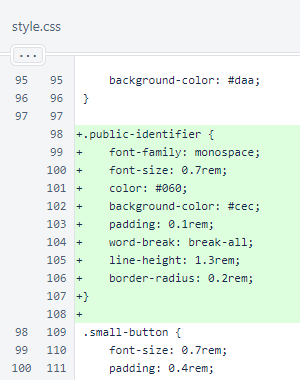Nyzo Chrome extension version 7 (commit on GitHub) adds a flow for authorization of automatic transactions.
This version adds protections that will allow automatic transactions to be used by a wider user base, and this version will be submitted to the Chrome Web Store. However, we will always recommend using a low-balance account for the Chrome extension.
In the content script, the tip
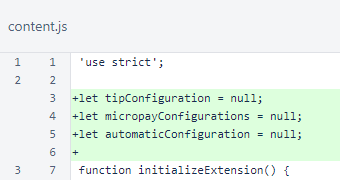
The iteration style for the listener for storage changes was modified, and a condition was added to respond to changes in automatic transaction authorizations.
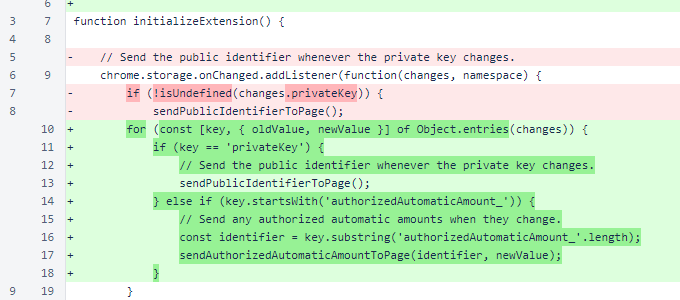
Authorized automatic amounts are also now sent to the page to allow it to respond appropriately when authorization is inadequate for proper function.

Loading of Micropay configurations from the page has been refactored to the
load
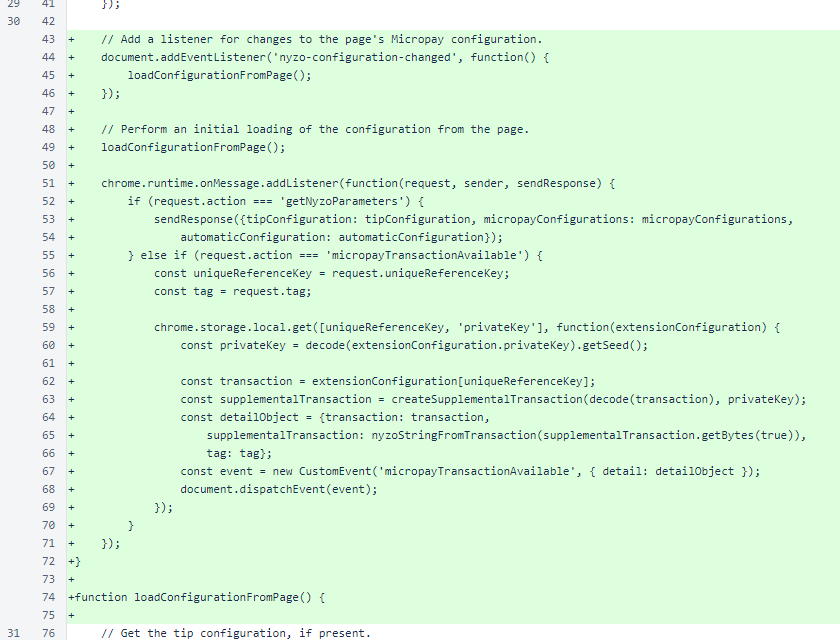
As noted above, the tip

The removed code from lines 72 to 89 has moved to starting at line 51, as indicated above.
The automatic configuration is now read and stored. This configuration allows specification of a receiver, minimum amount, recommended amount, and display name. Configuration of both an amount and receiver makes automatic transactions as safe as conventional transactions. Users only send money to intended recipients, and users send no more than intended amounts.
The display name, not yet used, will allow better communication to users about the purpose of the authorization.
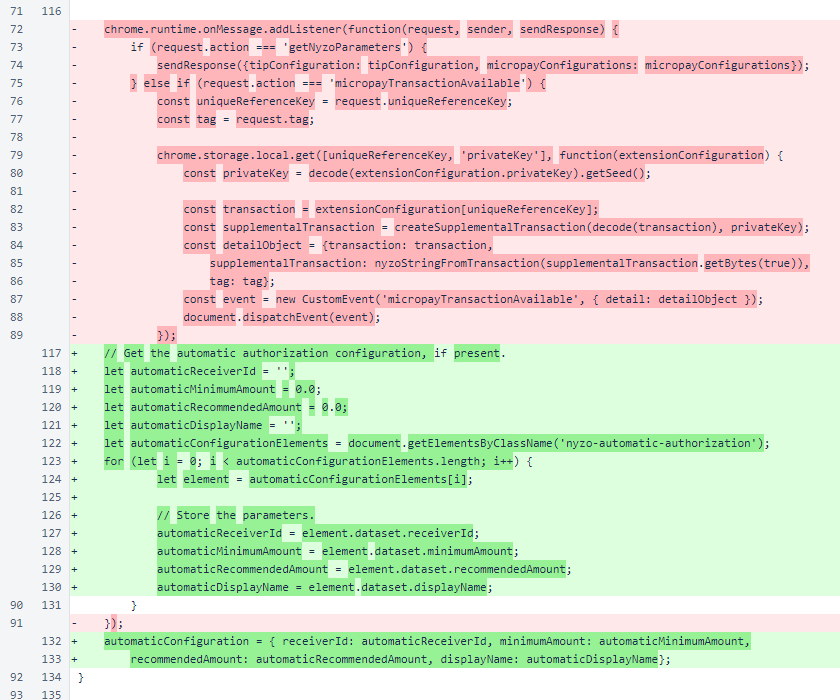
When sending an automatic transaction, the authorization amount for the specified receiver is now checked.

Automatic transaction amounts are deducted from authorizations.

All automatic authorizations amounts are communicated to the page on initialization with the
send
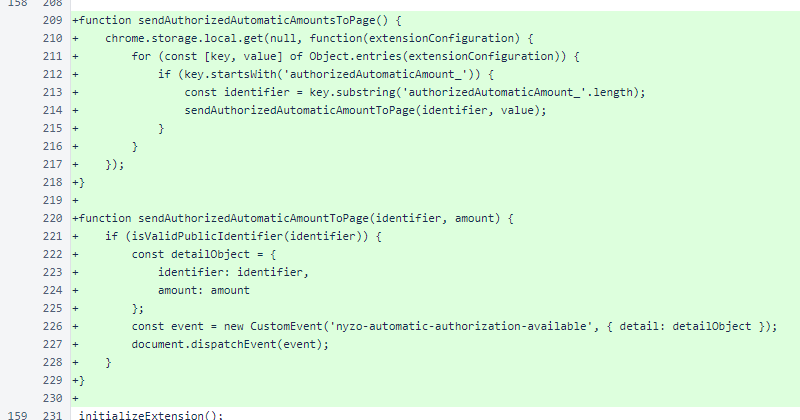
Support of the the maximum automatic authorization parameter has been added to the
extension
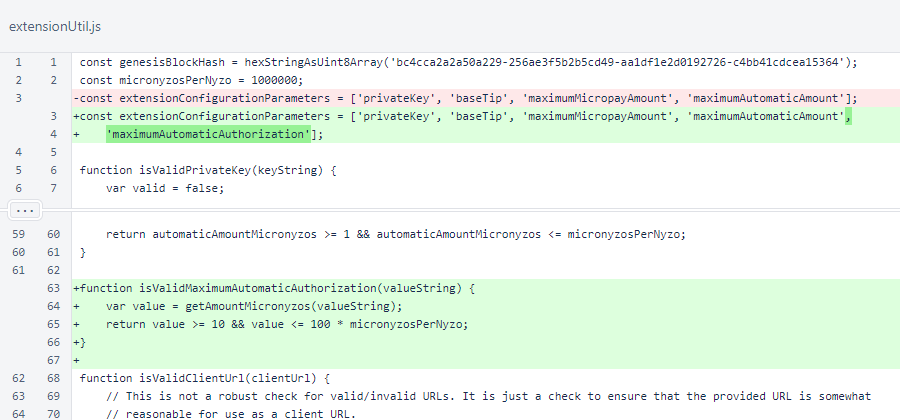
The extension's description has been updated to reflect the new functionality offered by automatic transactions.
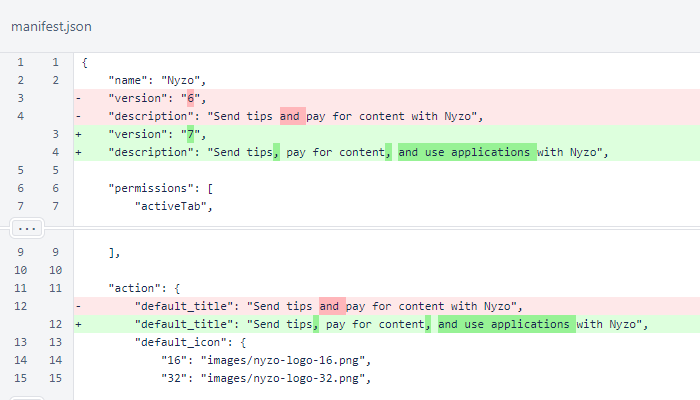
A field has been added to the options page for maximum automatic authorization.
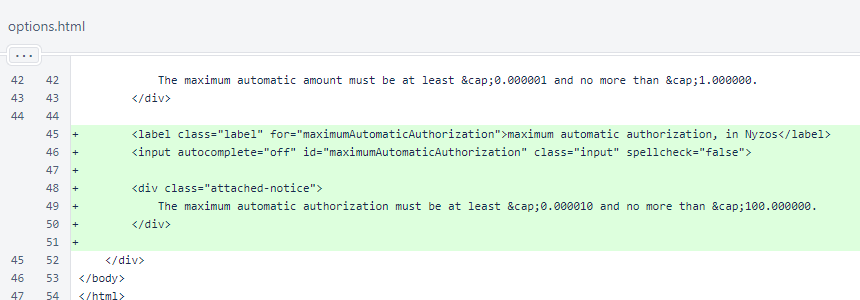
The options script was modified to support the maximum automatic authorization field.
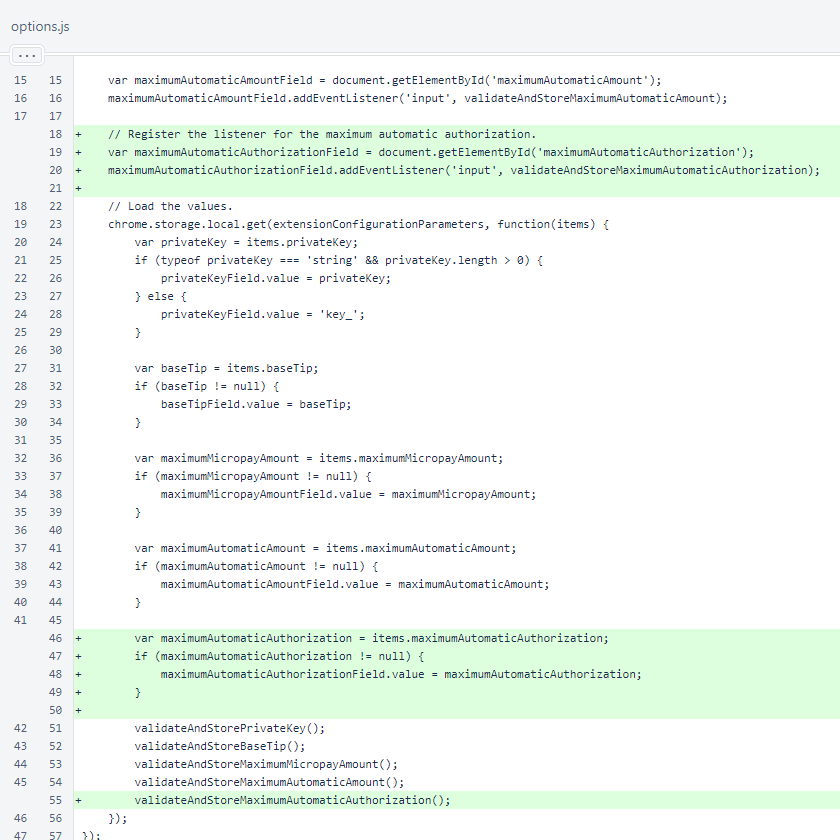
The validate
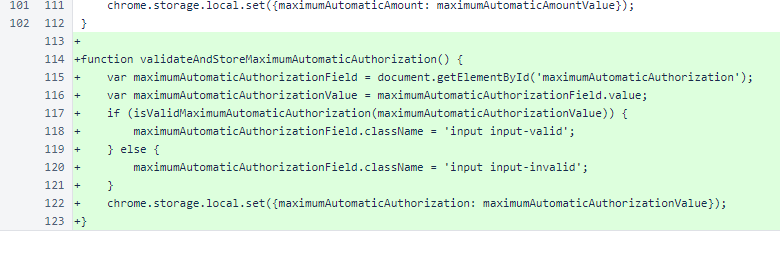
In the popup, an inconsequential oversight in the placeholder texts of the Micropay notices was remedied.
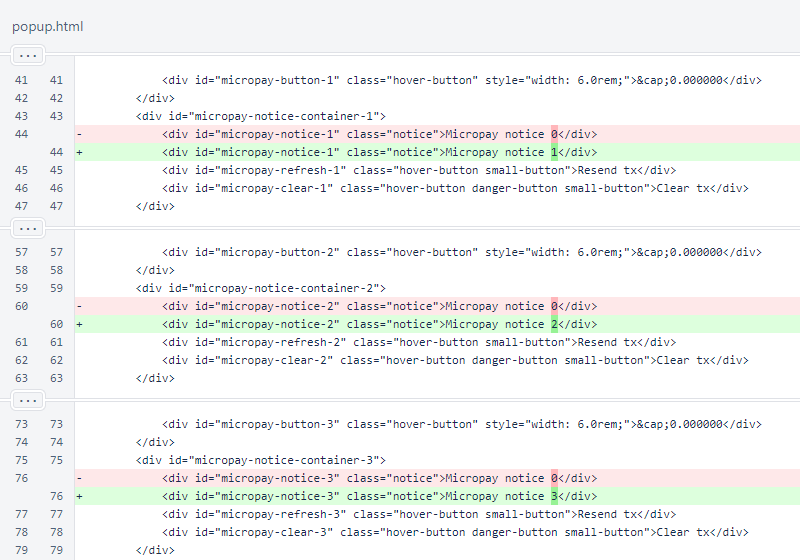
Also in the popup, elements were added to support automatic authorizations.

The page notice in the popup was modified to be more inclusive of current extension functionality.

Some variable declarations in the popup script were modified from var to
let to improve scoping. The micropay
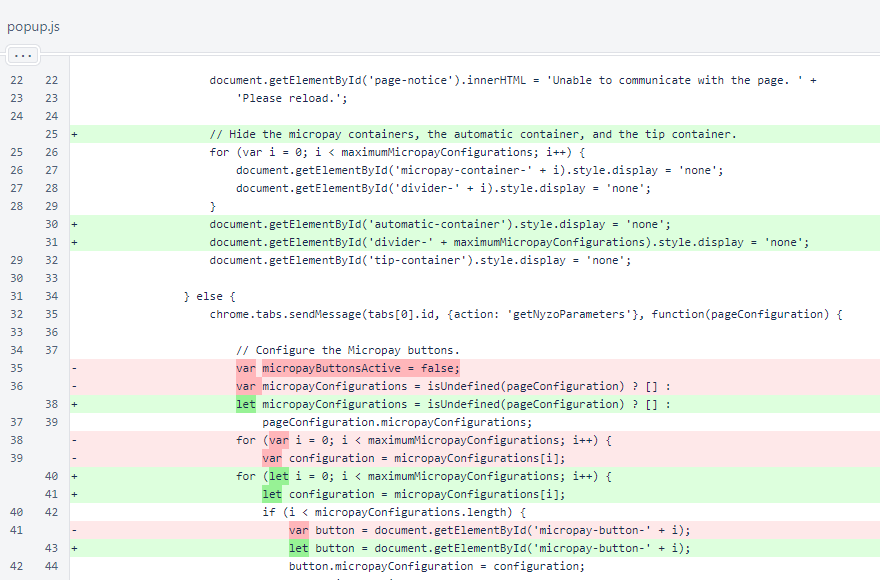
The automatic authorization section of the popup is configured when authorization information is available.

Hiding of the last divider in the popup was generalized to account for the presence of the automatic authorization section.
When a valid automatic configuration is available, the page notice is hidden. The page notice is only shown when a page does not use Micropay at all.
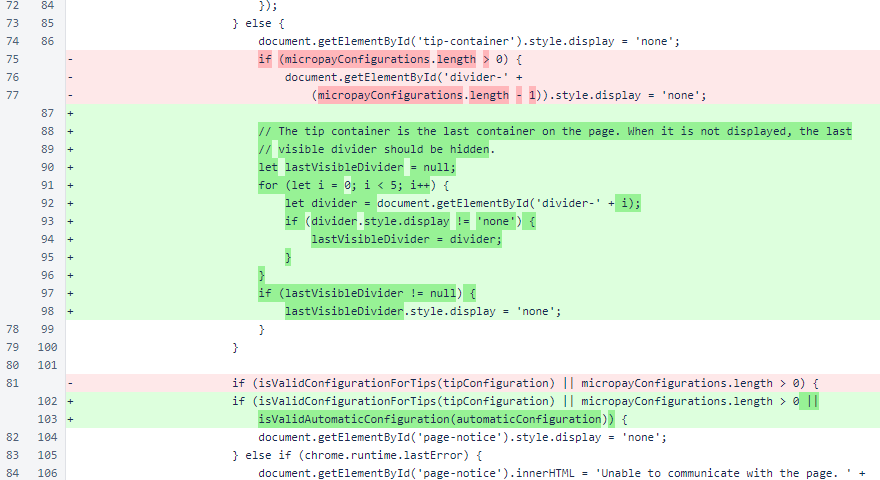
The new elements were added to the set of elements that are hidden when the extension configuration is not valid.

The configure
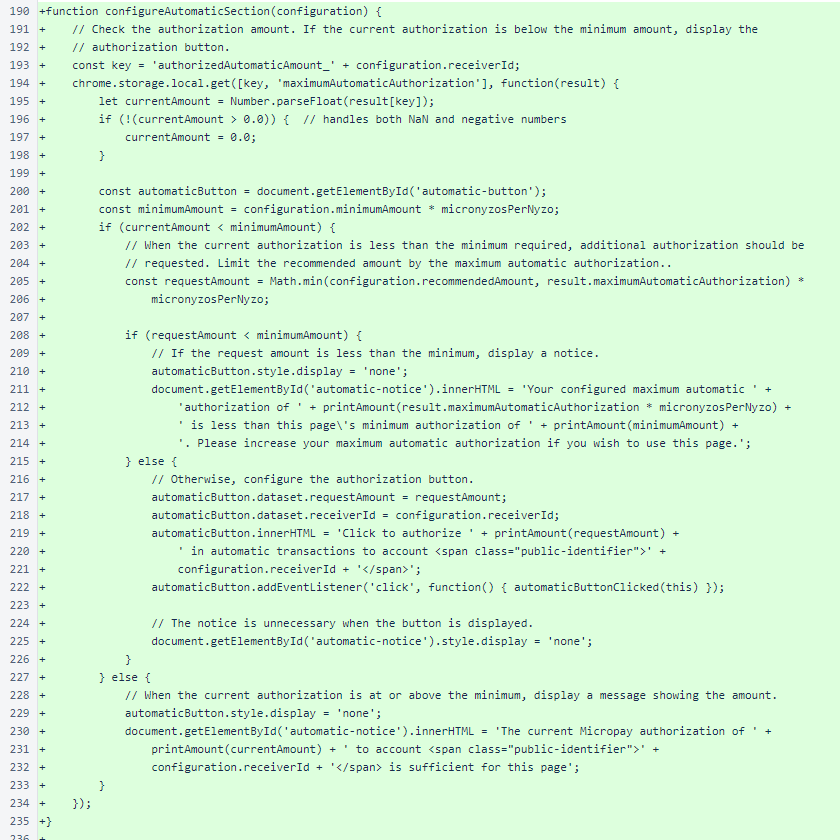
The automaticButtonClicked() function stores the authorization in local extension storage. This triggers the listener that notifies the page that the authorization has changed, and it makes the authorization available for future automatic transactions.
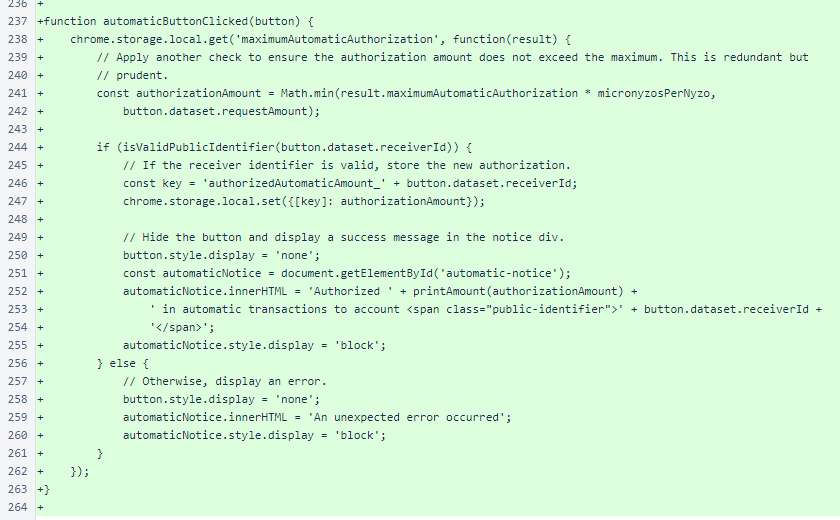
The code for storing and sending Micropay transactions in the send
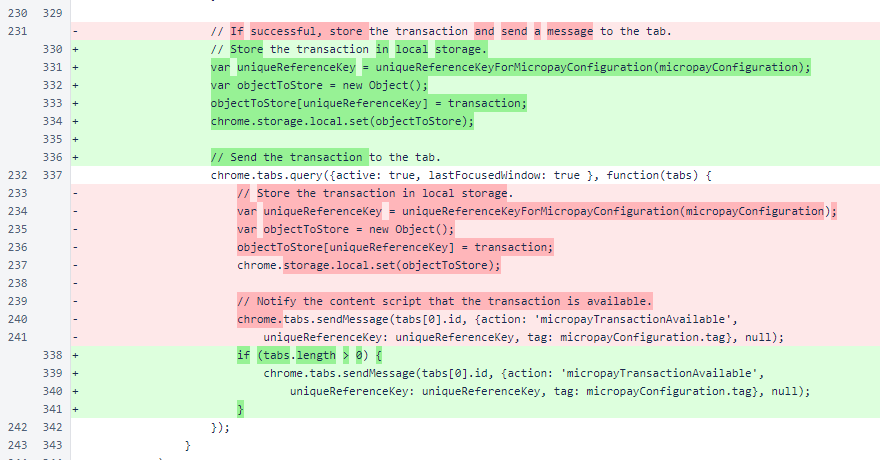
In the resend
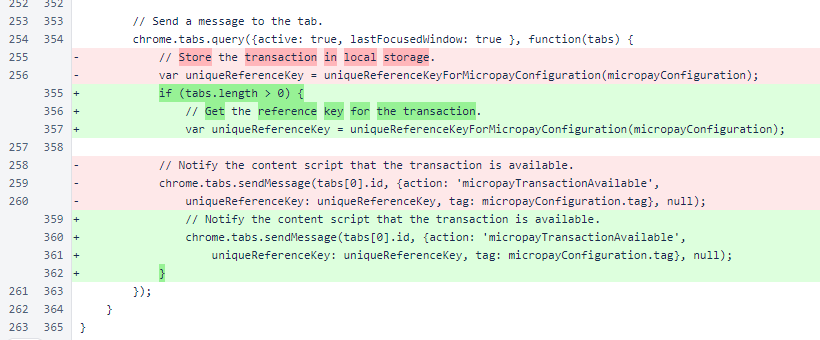
The is
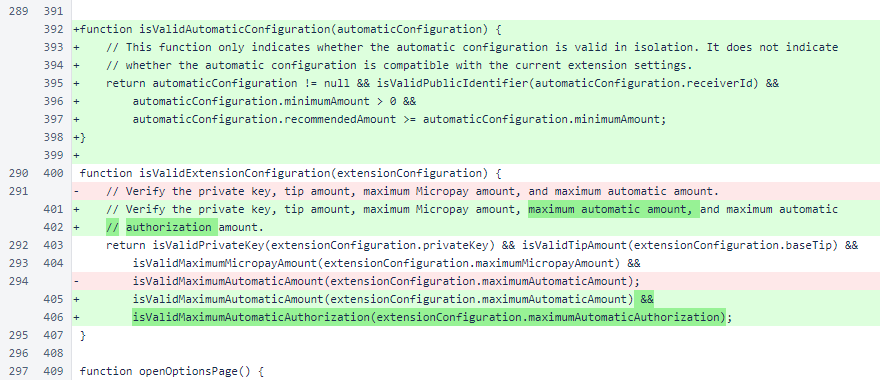
In the style sheet, the public-identifier class was added for display of Nyzo public identifier strings.
